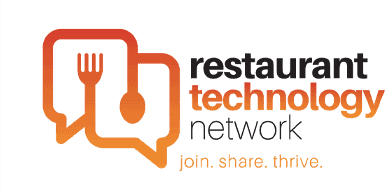As we navigate the peaks and valleys of the spread of COVID-19, we’ve all paid particular attention to the expert-recommended guidelines for keeping ourselves and our families safe from contracting the virus.
For business owners, however, there are a host of other concerns and COVID guidelines to keep in mind as they struggle to keep the doors open and income flowing in increasingly uncertain times.
One major consideration for all business owners is how best to keep workers as safe as possible, especially in businesses that involve regular contacts with the public, like restaurants and other service industries.
Tech solutions like contactless payment, mobile menu browsing, and curbside pickup are one aspect, but what else should you be doing?
Here are 7 tips for keeping your staff safe and healthy in the age of COVID-19.
Listen to the experts
It may seem obvious, but the most important general guideline for keeping ourselves and others safe during the pandemic is to seek out and follow the guidelines issued by public health and government officials.
In this era of 24-hour news and internet overload, it’s easy to get bogged down in rumor and misinformation, which makes it even more vital that our actions are based on the advice given by those who actually know what they’re talking about. Important resources continue to be the CDC and OSHA along with state and local authorities. (For CDC guidelines specific to the restaurant industry, check here).
Health checks
The CDC recommends that businesses consider conducting daily in-person or virtual health checks (e.g., symptom and/or temperature screening) of employees before they enter the facility, in accordance with state and local public health authorities and, if available, your occupational health services. They also offer these caveats:
- If implementing in-person health checks, conduct them safely and respectfully.
- Complete the health checks in a way that helps maintain social distancing guidelines, such as providing multiple screening entries into the building.
- Follow guidance from the Equal Employment Opportunity Commission regarding the confidentiality of medical records from health checks.
- To prevent stigma and discrimination in the workplace, make employee health screenings as private as possible.
Stay home
It’s vital to communicate with employees as to when they should stay home as well as when it’s safe to return to work. Actively encourage employees who are sick or have recently had close contact with a person with COVID-19 to stay home. Develop policies that encourage sick employees to stay at home (for example, sick leave) without fear of reprisal, and ensure employees are aware of these policies.
Masks
Masks remain our first and best line of defense against passing the virus on to others, as well as contracting it ourselves.
According to the CDC, “masks are currently recommended for employees and for customers as much as possible when not eating or drinking and when social distancing measures are difficult to maintain.”
It’s also important that employees avoid touching their masks when they’re on their faces. If employees do touch masks on their faces, they should wash their hands with soap and water for at least 20 seconds.
Hand hygiene
Frequent hand washing should be required of all employees and monitoring should be increased to ensure that guidelines are being followed. Educate all employees that hands should be washed before, during, and after preparing food as well as after touching garbage. Hands should be washed with soap and water for at least 20 seconds. If soap and water are not readily available, hand sanitizer containing at least 60% alcohol should be substituted.
Gloves should be worn by employees when they are:
- Removing garbage bags or handling and disposing of trash
- Handling used or dirty food service items
- Cleaning and disinfecting surfaces
Employees should also be educated as to the proper way to shield coughs and sneezes by using either a tissue or the inside of the elbow. Used tissues should be thrown in the trash and hands washed immediately with soap and water for at least 20 seconds.
Sanitation
Regular cleaning and sanitizing have always been critical in foodservice. Procedures like wiping surfaces with a wet cloth, cleaning surfaces with a glass or all-purpose cleaner, and the use of food-grade sanitizer continue to be common-sense precautions that should always be followed.
As a result of COVID, however, there is now an increased emphasis on disinfecting as opposed to simply sanitizing. An increased use of disinfectant is now the norm throughout restaurant facilities, focussing on all key staff and guest touchpoints.
Ventilation
According to the CDC, there is evidence that under certain conditions, people with COVID-19 seem to have infected others who were more than 6 feet away. This is called airborne transmission. These transmissions occurred in indoor spaces with inadequate ventilation. In general, being outdoors and in spaces with good ventilation reduces the risk of exposure to the virus that causes COVID-19.
To alleviate these airborne transmission concerns, they recommend ensuring that ventilation systems operate properly. They also recommend increasing the circulation of outdoor air as much as possible by opening windows and doors and prioritizing outdoor seating.
Doing all you can to keep your staff safe and healthy is an even greater responsibility now than it was before the pandemic. By following these guidelines and implementing contactless tech solutions wherever possible, you can go the extra mile in keeping not just your staff, but your customers, as safe as possible.





